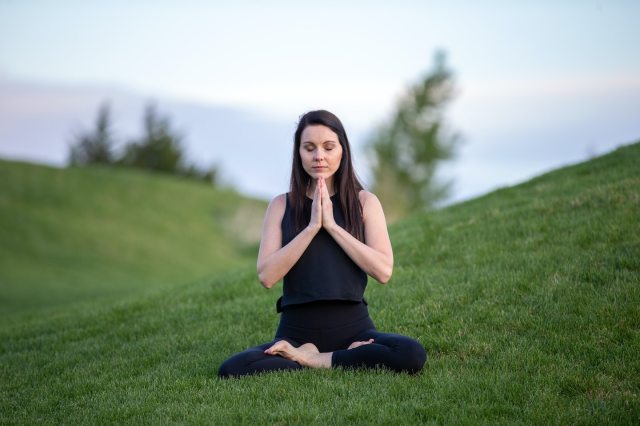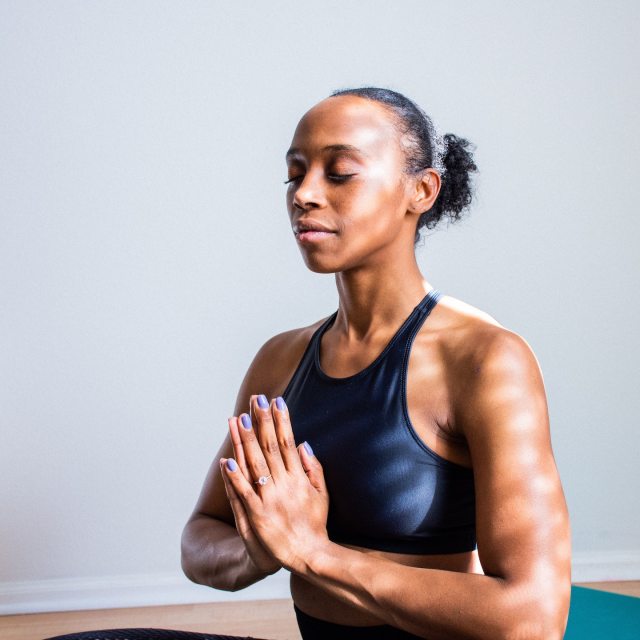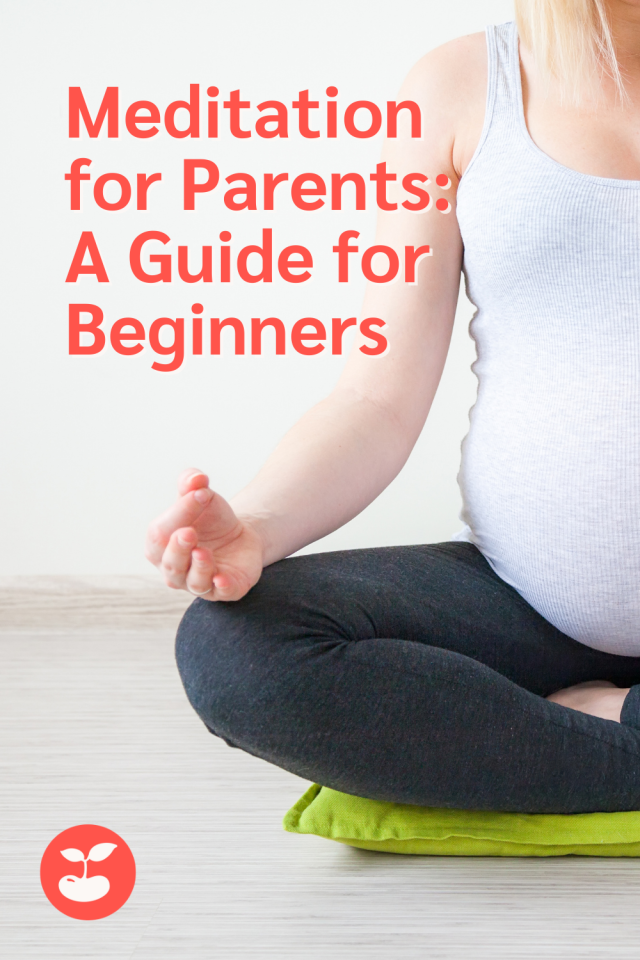As rewarding as parenting is, a certain amount of stress comes with the territory (kids, job, home management!). The good news is that recent studies show that the benefits of meditation are abundant, and when practiced regularly, it can significantly reduce anxiety. If you would like more harmonious home life but aren’t sure where to begin, read on for a quick and easy guide on everything you need to know about how to meditate.
The Basics

What is meditation?
You can hardly walk down the street without catching a snippet of conversation or pass by a yoga studio with signage touting the wonders of meditation. As widely publicized as the practice is, meditation remains a mystery to many.
Simply put, meditation is a mind and body practice that involves focusing your attention on a single point of reference and away from distracting thoughts and external stimuli that cause anxiety. Parents are, by necessity, multitaskers. Moms and dads spend most of their time considering what happened earlier in the day and what has to be done tomorrow, all while cleaning the house and making work calls simultaneously. Meditation practice gives practitioners five, 10, 30 or more minutes a day of simply living in the present.
The Benefits of Meditation
Meditation is particularly effective at helping parents to manage stress levels, but studies show it offers other benefits. Along with addressing anxiety, it helps reduce and manage feelings of anger and hostility, as well as psychological distress. Regular meditation practice has also been shown to be good for heart health, as it lowers blood pressure—particularly for people at risk for high blood pressure. Additional benefits include relief from symptoms of IBS and colitis, help with insomnia and pain management.
Types of Meditation

Confusion over the practice of meditation often comes from the variations that exist. Here we break down the most common types of meditation that are practiced.
Mindfulness Meditation
By far one of the most popular approaches, the mindfulness practice is easy to start on your own. Practitioners find a quiet spot where they can sit comfortably and then, without judgment, take note of how their mind wanders. The idea is to quietly observe your thoughts without experiencing them as pleasant or unpleasant. This practice helps develop inner peace and emotional balance.
Breath Awareness Meditation
A variation on the Mindfulness Meditation, this version calls for the practitioner to find a quiet place to sit where they can remain undisturbed and focus their attention on the breath. This practice can include counting breaths or focusing on the sensations it creates in the body. When thoughts enter the mind or distract from the breath, practitioners are encouraged to gently and without judgment take note and shift their focus back to breathing. This practice improves concentration and reduces anxiety.
Mantra Meditation
Much like other forms of meditation, this practice involves finding a quiet place to focus attention on a mantra, phrase or word. The mantra can be chanted out loud or thought without being spoken. It is repeated for a set period, and when the mind wanders, it is brought back to the message. The most common mantra is the chanting of the word Om, which is commonly practiced in yoga classes. Words and phrases that are often favored for this meditation are "peace," "I am at peace," "let go" or "relax." This practice reduces stress, invokes the state of mind suggested by the mantra and helps the practitioner feel grounded.
Loving Kindness Meditation
Aptly named, this meditation is perfect for the burnt-out parent who doesn’t think they can make it through one more toddler fit or night without sleep. After a short time of focusing on breathing, the practitioner opens himself or herself to receiving love and sends messages of love and kindness to specific individuals and the global community. This practice helps reduce tension and cultivate feelings of acceptance, support and love.
Body Scan Meditation
This meditation is extremely effective at reducing stress. It is done either sitting or laying down and involves slowly scanning the body for hidden tension or stress. When you find a tensed muscle or unintended tightening in an area of your body, you concentrate on releasing it. One approach to this practice includes progressively tensing and relaxing the muscles as you move from head to toe.
Guided Meditation
During this practice, you receive guidance from a trained professional. This can be done in a class setting, with a counselor or while listening to a recorded audio file. The meditation may include music and will ask that you visualize or focus on cues given to you by your instructor. There are an array of guided meditations available depending on the result you are seeking. There are guided experiences designed to evoke relaxation and feelings of well-being or to help you achieve desired goals.
Meditation for Beginners

Getting Started
Time tends to be the biggest obstacle most parents fear will keep them from maintaining a regular meditation routine. But, research suggests that even 10 minutes a day makes a big difference in your stress level and your outlook on life. Follow these simple steps to starting your home meditation practice.
Step 1: The first step to starting your home practice is finding just 10 minutes of alone time a day (preferably at the same time each day). Some time opportunities to consider are first thing in the morning before the kids get up or while you are waiting for your coffee to brew. If you have a partner, have them give you a short break each day.
Step 2: Find a quiet spot where you won’t be disturbed for the duration of your practice. The bedroom or a reading nook works perfectly. Make sure you have pillows, cushions or a chair to ensure optimal relaxation.
Step 3: To remove concerns about time, set a timer that will let you know when you’ve reached your meditation goal. This will allow you to let go of that common distraction.
Step 4: Begin your practice. If you have chosen a breathing meditation, let your focus turn inward. If you have a guided meditation, begin your listening experience.
When your practice is over, slowly bring the focus back to your surroundings. Gently open your eyes and take your time getting up and moving around. Let the effects of the practice take hold.
Helpful Tips

Life with kids is unpredictable; there are plenty of things that can get in the way of maintaining a regular meditation practice. The following tips will help you navigate the unexpected and commit to doing this very important exercise that is just for you.
1. While finding a quiet spot to sit or lie down for your practice is optimal, meditation can be done anywhere. Consider a five-minute meditation while waiting in the car to pick up the kids from school. Practicing while walking is another wonderful option. Put your fussy toddler in a stroller and go for a walk. Turn your attention to your breaths or the rhythms of your steps for a focal point.
2. If you feel you need some guidance, try one of these popular meditation apps. We especially like Headspace and Calm because they offer a variety of practices.
3. If you can’t fit 10 minutes in, then try for five. Consistency is key, and all efforts pay off.
It may feel selfish to take time just for you when you have little ones to look after, but remember, the healthier and happier you are, the healthier and happier your whole family will be—and that's just one of the reasons you should meditate. If finding time seems truly impossible, get your kids involved in their practice. You can let them learn along with you or check out some of the apps, games or meditation videos that are available for kids—like those on Hulu. Meditation is something everyone in your crew can do, and the result will keep your whole household feeling connected
—Annette Benedetti
RELATED STORIES:
Hulu Kids Launches Mindfulness & Meditation Content & It’s What Parents Need
3 Genius Ways Busy Parents Can Work Meditation into Their Daily Routine
Mom-Friendly Meditation Apps for a Centered New Year

Need some fresh ideas?
Subscribe to our weekly newsletter for expert parenting tips and simple solutions that make life instantly better.
By subscribing you agree to Tinybeans Terms and Privacy Policy










